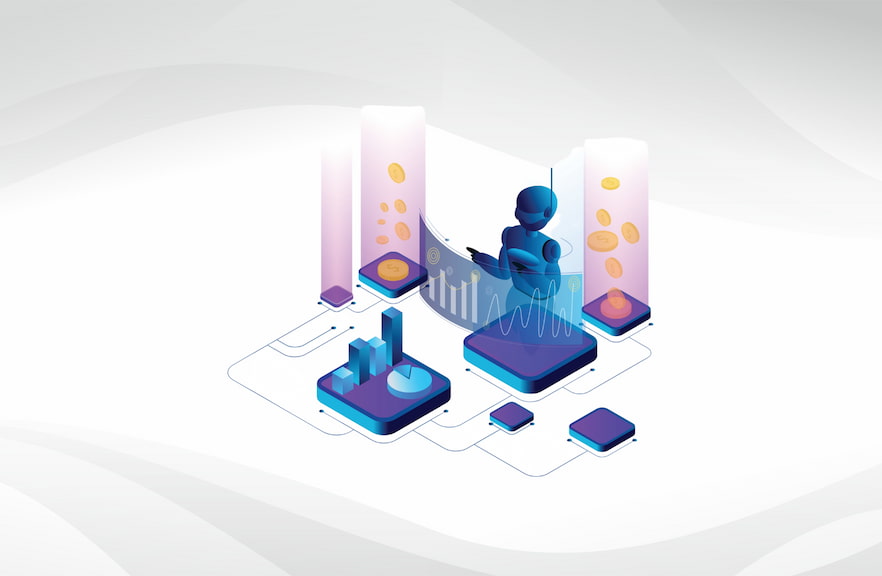Generative AI (GAI) has heralded a revolutionary moment in the world of technology. One of the GAIs, ChatGPT, released on November 22, reached 100 million users merely two months after its launch and became one of the most significant talking points in the tech world. While the users of ChatGPT are in awe of the bot’s “human-like” reactions, technology experts are discussing the potential uses and issues related to GAI. In both the short- and long terms, GAI can transform every aspect of human activity to increase productivity, lower costs, and foster innovation, along with other far-reaching benefits.
The market for GAI has shown phenomenal growth due to rising demand and technological adoption. This is demonstrated by the rise in start-up investments in artificial intelligence (AI) and the number of businesses introducing AI-based services. As a result, research indicates that by 2030, the market for GAI will be worth $110.8 billion.
What Is Generative AI?
GAI is an AI technology that can generate various types of content, including text, imagery, audio, and synthetic data. The ease with which GAI generates high-quality text, images, and videos has fueled recent interest in the technology. It begins with a prompt, which might be anything the AI system can interpret, including text, an image, a video, a design, musical notation, or any other input.
In response to the prompt, several AI algorithms, such as generative adversarial networks (GAN) and autoencoders, churn out fresh content. Essays, problem-solving techniques, and lifelike impersonations made from a person’s images or audio can all be included as content. Popular GAI interfaces include ChatGPT, Dall-E, and Bard. Two recent advances have played a critical part in GAI becoming mainstream — transformers and the breakthrough language models they enabled.
- Transformers: It enables researchers to train larger AI models without labelling all the data beforehand. These are a type of machine learning (ML) algorithm that allows this functionality. Transformers might also analyze DNA, proteins, chemicals, and codes using their ability to identify connections (e.g., BERT).
- Large language models (LLMs): The advent of models with billions or even trillions of parameters has ushered in a new era where GAI models can now write engaging text, paint photorealistic graphics, and even churn out sitcom scripts on demand. One can create content across many media types, including text, images, and video, thanks to advancements in multimodal AI. This is the foundation for programs like Dall-E, which automatically generate ideas from text descriptions or photo captions. Take GAN as an example. According to Global X Research, by 2030, big language models will be able to provide final drafts of AI-generated text, code, and graphics that are superior to those generated by skilled authors, developers, and artists.
While GAI’s innovative capabilities are fascinating, the moral and societal implications of GAI demand careful consideration. For instance, GAI might produce false or misleading information that endangers people’s privacy or trust. Therefore, employing GAI sensibly and considering some of its implications is crucial.
- Users cannot determine the bias of sources since GAI does not always identify the source of the content.
- GAI’s realistic-sounding content makes it harder to identify inaccurate information.
- GAI is like a robot, which limits its understanding in identifying and responding to new circumstances.
- Some results generated by GAI can gloss over bias, prejudice, and hatred.
- There are a lot of LLMs besides ChatGPT that are open-sourced and hence are free to use.
- A proper governance model is essential for LLMs as it has learned context from data outside the business’s scope.
- Even an 80% accuracy rate is not good enough when using LLMs to accelerate workflows.
- The scope of work allocated to LLMs must be designed with clear and thought-through guardrails since, in most cases, it is essential to begin with guardrails or rule-based outcomes. For example, if you want to summarize your legal documents, it is necessary to use rule-based filters to segregate different loan documents from investment documents.
Although GAI is still in its infancy and faces social and ethical challenges, the technology has already established a solid foothold in several industries. Companies across sectors have leaped on board and are now adopting GAI solutions, from automating repetitive activities to improving customized communications. These cutting-edge developments are altering the world as we know it, with investments, partnerships, and new product releases increasing every day.
Applications of GAI in the Finance Sector
The financial services industry is already on its way to adopting GAI models for specific financial tasks. The most beneficial and practical applications are anticipated in wealth planning, virtual assistants, personalized offers, and fraud detection and prevention. Although numerous valuable use cases exist, loan decisions, trading, and compliance are not appropriate uses for GAI.
For instance, among the few companies using OpenAI’s newest GPT-4 are Stripe and Morgan Stanley. Morgan Stanley utilizes chatbots powered by OpenAI to assist financial advisors by drawing knowledge from the company’s repository of research and data. More intriguingly, Bloomberg revealed its BloombergGPT, a finance-tuned generative model that performs benchmark-beating sentiment analysis, news classification, and other financial activities. Other use cases of GAI include:
- Fraud detection: GAI can be used for fraud detection in finance by generating synthetic examples of fraudulent transactions or activities. These generated examples can help train and augment ML algorithms to recognize and differentiate between legitimate and fraudulent patterns in financial data.
- Personalized financial advice: ChatGPT can already provide good financial advice (or at least that sounds correct). This development has led many consumers and finance professionals to question whether this could end the role of financial advisors (and, as an extension, even state-of-the-art robo-advisors).
- Risk management and detection: GAI can anticipate market sentiment and predict risk based on news and social content. It also delivers new insights from historical data and provides better forecasts of future performance.
- Customer support: Trained bespoke GPT chatbots serve unique customer needs, assist with product comparison and selection, and improve conversion rates.
LatentView Expertise
At LatentView, we have built bespoke solutions frameworks that address a few pressing issues of our financial customers using advanced analytics, AI, and ML. Some of the practical GAI-enabled solutions are listed here.
| Theme | LatentView Expertise |
| Fraud detection | Image analytics Fraud management (financial crimes) |
| Data protection | Synthetic data generation Enterprise data hubs |
| Personalized experience | Retention and acquisition analysis SmartInsights/smart innovation |
| Enhanced customer support | Customer support recommendation engine |
| Risk management | Anomaly detection |
| Process streamlining and automation | Faster image production and analytics Automating pipelines and queries |
Success Stories
- Casper: It is an AI-driven, domain-specific assistant with built-in capabilities, intelligent analytic suggestions, and summarization, and capable of continuous improvement through deep learning. Its capabilities are achieved through an easy interface that even non-experts can use. Casper can take inputs by typing or speaking your questions and provide insights in visual, text, or voice forms and is compatible with desktops and smartphones. Casper has helped multiple clients to enhance their AI-powered chat experience.
- SmartInsights: An AI-powered open-source intelligence platform, it helps companies identify and classify publicly available information ahead of the curve and deliver an advantage regarding commercial and customer experiences. With SmartInsights, we have helped one of the leading CPG companies identify the top five flavors that their customers prefer.
- Enhanced customer support: We operationalized ML/DL models by building a reliable, automated recommendation system to generate prediction faster to improve the existing customer support to one of the top manufacturers of computers, imaging, and printing products and related technologies, solutions, and services. The real-time interfacing platform helped the client to save up to $3 million per year by providing the best in-house recommendation system.
- Process streamlining using image analytics: We developed a novel deep learning model using a convolutional neural network (CNN) that can be used to perform a quantitative and qualitative analysis of image assays to model morphological changes and drug response. Self-supervised denoising model can effectively learn from a single noisy image, eliminating the need for a ground truth or different noise relation of images. This was built to help in drug discovery for one of our clients, a prominent manufacturer of industrial, commercial, and goods and services.
Conclusion
The future of financial services is bright with the potential use cases of GAI. Financial institutions can transform how they operate, analyze data, and make decisions by leveraging the power of this advanced technology. From digital transformation, fraud detection, and investment management to credit risk assessment and customer service, GAI can revolutionize every aspect of the financial services industry.
References:
https://www.techtarget.com/searchenterpriseai/definition/generative-AI



